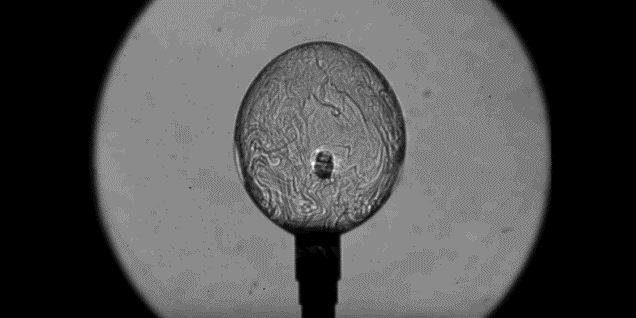
As an artistic technique that's fundamentally grounded in physics, photography can be leveraged for scientific merit. This is particularly true when the practice is combined with other light refracting techniques to capture a world otherwise unseen. Most recently, Victor Miller and his colleagues from Stanford University fired laser at methane bubbled and recorded its ignition at 10,000 frames a second using a technique called Schlieren imaging.
As you'll immediately notice from the video, the imaging is unlike anything we've ever seen before, lest you study aerodynamics or supersonic motion.
Dating back to 1864, Schlieren imaging allows us to visualize the flow of air density originating from a source of supersonic motion, so that the warmer air produced by ignition, or from anything that disrupts air, can be distinguished from surrounding lower temperature air. This is accomplished by shining a point-like light source (a laser in this case) through a single slit before reflecting the light off of a parabolic mirror to create a parallel beam. Next another parabolic mirror is used to focus the light into a single focal point and then into the lens of a camera to snap the picture.
There’s more to it than that, requiring that a barrier and something to distort the air (a candle or in this case, the igniting methane) be placed at the focal point along. The barrier blocks the light rays and creates a silhouette while the rising heat changes the density of the air above the lighter, while simultaneously bending the light ray. But because it cannot pass through the focal, the picture comes out darker. Such set up can be used to photograph anything from sneezing and coughing, to sound waves originating from a clap, or chemical reactions culminating in a flash of light.
The current iteration is a step up from Dr. Miller's previous video, in which he recorded the burning of a match using the same technique.
In fact, passing Miller's graduate level class requires that students both master applying Schlieren imaging and successfully calculating the speed at which the flame grows based on the video they've recorded. The video below is one such startling examples.
Advertisement
Learn more about Electronic Products Magazine





